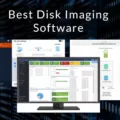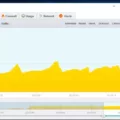As the digital world continues to evolve, so does the need for increased security measures to protect our data and online identities. Cybersecurity is an essential part of any organization’s IT infrastructure, and a thorough risk assessment is an important part of any cybersecurity strategy. Risk assessment helps organizations understand their current security posture, identify potential threats and vulnerabilities, prioritize resources to mitigate risks, and develop appropriate security controls.
The National Institute of Standards and Technology (NIST) Cybersecurity Framework provides a flexible and structured approach for organizations to assess their cybersecurity risks and prioritize actions to reduce those risks. This framework incorporates four common risk assessment tools: risk matrix, decision tree, failure modes, and effects analysis (FMEA), and bowtie model. The risk matrix is used to evaluate potential risks by assigning each one a severity level; this helps organizations determine which risks are the highest priority. The decision tree allows organizations to analyze the costs associated with various decisions regarding cyber security. FMEA provides an in-depth look at potential failure points within an organization’s system architecture, helping inform decisions about where additional controls should be put in place. Finally, the bowtie model offers a visual representation of the relationship between threats, vulnerabilities, controls, and impacts in order to better understand how they interact with each other.
In addition to these four tools, NIST also offers its Cyber Risk Scoring (CRS) Solution as part of its Security & Privacy Assessment & Authorization (A&A) process. CRS provides real-time contextualized risk data that can help organizations improve their situational awareness and prioritize required actions based on risk levels. This data is then ingested into Archer – a cloud-based GRC platform – for further analysis via Tableau dashboards.
Overall, cyber security risk assessment tools are essential for any organization looking to effectively manage its cyber security posture. By leveraging these tools in combination with other best practices such as patch management and user education programs, organizations can develop comprehensive cyber security strategies that will help protect their networks from potential threats while also allowing them to take advantage of digital opportunities without compromising safety or privacy.

Risk Assessment Tools for Cyber Security
A risk assessment tool for cyber security is a software program that helps organizations identify, analyze and evaluate potential risks related to their information technology systems. It provides a comprehensive view of the organization’s existing cyber security posture by assessing all aspects of the IT system, including hardware, software, and networks. The tool can help identify weaknesses in the system, evaluate the likelihood of an attack and suggest appropriate countermeasures. Risk assessment tools are designed to provide an objective view of the current risk environment and can be used to develop a risk management strategy. They can also be used as part of a continuous monitoring program to ensure that the organization remains compliant with security regulations and best practices.
Choosing the Best Cybersecurity Risk Assessment
The best cybersecurity risk assessment is one that is tailored to the specific needs of an organization and its environment. The National Institute of Standards and Technology (NIST) Cybersecurity Framework provides a comprehensive, customizable approach to assessing cybersecurity risks. Its five core functions—Identify, Protect, Detect, Respond, and Recover—provide guidance on how organizations can assess their current cybersecurity posture and prioritize actions to reduce their risk.
The NIST Cybersecurity Framework enables organizations to identify potential risks associated with their systems and processes, design controls to protect against those risks, detect when something has gone wrong, respond quickly if an incident occurs, and recover from a breach. It also provides a way for organizations to monitor changes in the environment over time and adjust their security measures accordingly. By using this framework as a starting point, organizations can ensure that they are taking all necessary steps to protect their data and systems from cyber threats.
Tools Used for Risk Assessments
Risk assessment tools are used to identify, evaluate, and prioritize risks in order to make decisions about how to best manage or mitigate them. The four most common risk assessment tools are the risk matrix, decision tree, failure modes and effects analysis (FMEA), and bowtie model.
A risk matrix is a visual tool that allows users to quickly assess the severity of a potential risk by assigning numerical values to both the likelihood of occurrence and the potential impact of an event. This tool is helpful for quickly identifying risks that should be prioritized for further investigation and management.
The decision tree is a graphical representation of all possible outcomes from a particular decision-making process. This tool can help organizations visualize their options when making decisions about how to handle risk in order to identify the best course of action.
Failure modes and effects analysis (FMEA) is a structured approach used for analyzing processes, products, services, or systems for potential risks associated with their failure or malfunction. The aim is to identify any areas where corrective action may be needed in order to reduce or eliminate the associated risks.
The bowtie model is another graphical representation that helps users identify what could cause an undesirable outcome as well as how it can be prevented or mitigated through effective controls. This tool is especially useful for complex situations where multiple causes and effects need to be evaluated simultaneously in order to come up with an effective solution.
Other risk assessment techniques include what-if analysis, failure tree analysis, and hazard operability analysis (HAZOP). Each of these tools has its own unique features and applications which can help organizations accurately evaluate potential risks associated with their operations in order to make informed decisions on how best to manage them.
Understanding the NIST Security Assessment
A NIST security assessment is a comprehensive review of an organization’s security posture, identifying potential threats and vulnerabilities. It assesses the potential risks associated with those threats and vulnerabilities, including the impact they could have on the organization’s systems, personnel, and operations. The assessment also evaluates the likelihood of an attack occurring and provides recommendations to reduce or eliminate identified risks. By identifying potential threats and their impacts, a NIST security assessment helps organizations strengthen their overall security posture.
Performing a Cybersecurity Risk Assessment
A cybersecurity risk assessment is an important process for any organization to protect its information assets, data, customers, and employees. The process involves identifying and assessing the potential threats to an organization’s systems, assessing the likelihood of these threats being exploited, and determining the impact that such an attack may have on the business. Here are the 6 essential steps for performing a successful cybersecurity risk assessment:
1. Identify Threat Sources – The first step in a risk assessment is to identify all potential sources of threats. This includes external threats such as hackers and malicious software, as well as internal threats such as employee negligence or malicious insiders.
2. Identify Threat Events – Once potential threat sources have been identified, you should then list all potential threat events that could occur due to these sources. Examples include unauthorized access, data breaches, or system outages caused by malware.
3. Identify Vulnerabilities – Once all potential threat events have been identified, you should then identify any technical vulnerabilities present within your systems that could be exploited by any of these threats. This includes weaknesses in your network security or a lack of user authentication procedures.
4. Determine the Likelihood of Exploitation – Once you have identified all potential vulnerability issues, you should then assess the likelihood that these issues can be exploited by any of your identified threat sources. This can include evaluating past attacks against similar networks or estimating attack success rates for known exploit techniques.
5. Determine Probable Impact – After assessing the likelihood that a vulnerability will be exploited by a threat source, you should then determine what impact this could have on your organization if it were to happen successfully. This can include financial losses from stolen data or reputational damage due to customer dissatisfaction caused by system outages or data breaches
6 Calculate Risk as Combination of Likelihood and Impact – Finally, after completing steps 1-5 you can calculate an overall risk score based on both the likelihood of exploitation and the probable impact if it were to occur successfully. A risk score can be calculated using a table that assigns different weights depending on both variables (likelihood & impact). Based on this table you can then determine whether further action needs to be taken in order to reduce this overall risk score before it becomes too high and potentially damaging for your organization
Conclusion
In conclusion, cyber security is a critical component for any organization and should not be overlooked. Risk assessments are an important part of protecting your organization from cyber threats and the NIST Cybersecurity Framework provides a great starting point. It is essential to use risk assessment tools such as risk matrix, decision tree, FMEA, and bowtie model to identify potential risks and prioritize actions to ensure the security of your organization’s data. Additionally, NIST’s Cyber Risk Scoring Solution provides real-time situational awareness for informed decision-making. With proper risk assessment and appropriate controls in place, organizations can confidently protect their valuable assets against cyber threats.








